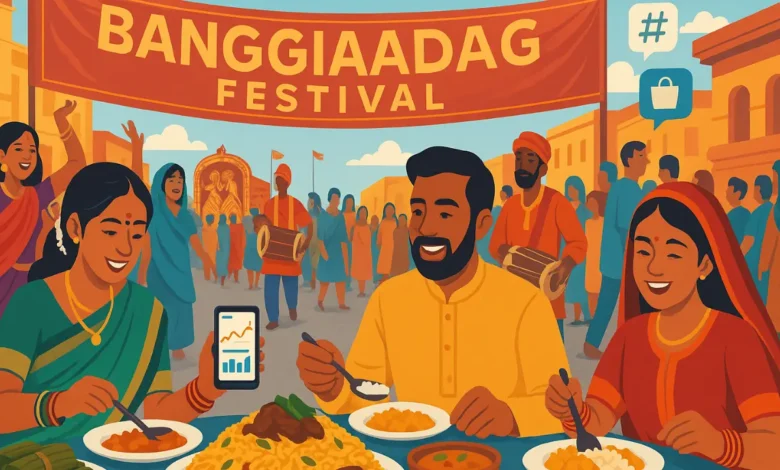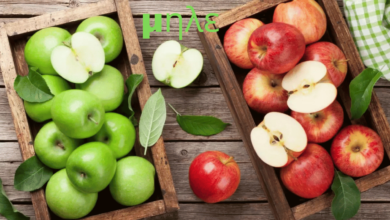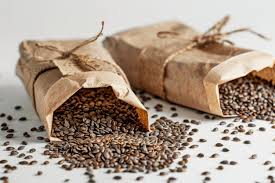Banggiadag: A Multifaceted Concept Redefining Culture, Cuisine, and Commerce

Banggiadag is gaining attention across various domains—cultural anthropology, gastronomy, digital strategy, and economic analysis. Though it might sound unfamiliar to many, banggiadag is more than a word—it symbolizes the fusion between tradition and modernity. Whether you’re a food enthusiast, cultural researcher, digital marketer, or investor looking into emerging economic indicators, understanding banggiadag can offer a unique lens to appreciate how diverse elements come together to form a cohesive identity.
The Cultural Heritage of Banggiadag
Origins and Etymology
The banggiadag is believed to be rooted in a blend of Southeast Asian and Middle Eastern dialects. It often describes a “day of abundance” or “celebration of unity.” Over centuries, it became a symbolic representation of harvest festivals, community bonding, and spiritual rituals.
In regions where banggiadag festivals are celebrated, it marks a time when people from different castes, backgrounds, and age groups unite to honor ancestors, agricultural bounty, and harmony.
Traditional Festivities and Rituals
Banggiadag celebrations involve:
- Street Parades: With vibrant attire, local musical troupes, and floats showcasing historical tales.
- Dance and Drama: Folk artists reenact stories of myth and real-world triumphs.
- Community Feasting: A central table brings hundreds of families to eat from the same spread.
In villages of Indonesia, parts of India, and rural Philippines, banggiadag is as important as Christmas or Diwali in Western and South Asian contexts.
Culinary Delights of Banggiadag
Signature Dishes
Food plays a central role in banggiadag celebrations. Traditional dishes are passed down through generations and often prepared collectively by entire communities.
Top 5 Banggiadag Dishes:
| Dish Name | Description |
|---|
| Banggiadag Biryani | Layered rice dish with saffron, goat meat, fried onions, and dry fruits |
| Tamarind Fish Curry | Spicy curry with local herbs, coconut milk, and tamarind pulp |
| Laksa Verdura | Vegetarian noodle soup with tofu, sprouts, and lemongrass |
| Roasted Banana Wraps | Sweet plantains wrapped in banana leaves and steamed with palm sugar |
| Banggiadag Pudding | Creamy pudding made from rice flour, rose essence, jaggery, and pistachios |
Cooking as a Communal Activity
Unlike modern dining, banggiadag cooking is often a community endeavor. Men and women cook in open spaces, sharing tasks, laughter, and oral folklore—making the experience deeply bonding and spiritual.
Banggiadag as an Economic Indicator
In finance and economics, Banggiadag surprisingly refers to a composite market index used in localized Southeast Asian trading platforms.
What is the Banggiadag Index?
The Banggiadag Index tracks:
- Commodity Prices (mainly rice, spices, and raw fish)
- Seasonal Trade Volume
- Consumer Sentiment during Festivals
- Agricultural Output during the Banggiadag Period
Financial analysts and economists use this data to:
- Predict market consumption trends
- Plan product launches in festive periods
- Assess rural spending potential
Why Is It Important?
With the rise of alternative data sets in economic modeling, the Banggiadag Index offers a cultural-economic fusion to understand regional economic behavior during festival seasons better.
Banggiadag in the Digital Age
Viral Marketing and Brand Engagement
The Banggiadag has now found a digital interpretation of branding and social media virality. Influencers and marketing strategists use the term to launch seasonal campaigns that mimic the collective energy and celebration associated with traditional Banggiadag festivals.
Examples:
- #BanggiadagChallenge: A viral dance trend celebrating unity
- Banggiadag Bundle Sales: E-commerce campaigns during cultural months
- Digital Community Events: Webinars and forums themed around wellness and culture
Content Strategy and SEO
In content marketing, banggiadag serves as a metaphor for:
- Cross-niche storytelling
- Blending traditional keywords with modern audience needs
- Celebrating diversity and authenticity online
SEO professionals now capitalize on regional festivals and terms like banggiadag to boost local engagement and build niche backlinks.
Travel and Tourism During Banggiadag Season
Best Places to Witness Banggiadag
If you’re planning to experience banggiadag in its full glory, consider these destinations:
- Yogyakarta, Indonesia: Rich in rituals, dances, and spiritual parades
- Goa, India: Known for its Indo-Portuguese fusion version of banggiadag
- Davao, Philippines: Combines tribal performances with food fairs
Tour Activities
- Cooking with locals
- Attending spiritual chants at dawn
- Ritual bathing in community rivers
- Watching fireworks and puppet shows
These cultural immersions boost local economies and offer tourists unforgettable, soul-touching memories.
Educational and Social Significance
Many scholars now study banggiadag in anthropology, sociology, and cultural studies courses.
Core Themes Studied
- Intergenerational learning through folklore
- Food anthropology and its role in community hierarchy
- Ritual symbolism and its psychological benefits
- A digital translation of Indigenous festivals
NGO Participation
Several NGOs and youth clubs use banggiadag as a platform to:
- Promote environmental sustainability
- Teach ethical farming techniques
- Advocate for mental wellness through spiritual grounding
Future of Banggiadag
As globalization reshapes cultural landscapes, banggiadag is expected to transform as well.
Trends to Watch:
- Metaverse Festivals: Virtual Banggiadag celebrations
- NFTs for Cultural Memorabilia
- AI-assisted recipe preservation
- Cross-border Banggiadag Day campaigns
Conclusion: Why Banggiadag Matters
In a rapidly changing world, concepts like banggiadag remind us of the importance of tradition, togetherness, and transformation. Whether you see it as a festival, a food culture, a digital strategy, or an economic tool—banggiadag is a celebration of life itself.
Frequently Asked Questions About Banggiadag
What exactly is Banggiadag, and why is it important?
Banggiadag is a cultural concept that blends tradition, gastronomy, and economic significance. It originated as a festival rooted in Southeast Asian and Middle Eastern traditions. It now represents cultural unity, culinary heritage, seasonal economic activity, and digital marketing campaigns. It serves as a living example of how traditions adapt to modern times.
How is Banggiadag different from other cultural festivals?
While many cultural festivals focus solely on ritual or celebration, Banggiadag uniquely fuses community feasting, economic indicators, content strategy, and digital engagement. It’s not just a celebration—it’s a dynamic event that impacts agriculture, local trade, influencer marketing, and even tourism.
What is the Banggiadag Index in economics?
The Banggiadag Index is a localized market metric used by some Southeast Asian regions to track seasonal trade volumes, consumer sentiment, commodity prices, and agricultural yield during the Banggiadag season. It provides insights into rural spending power and is valuable for economic forecasting during cultural periods.
How can digital marketers use Banggiadag for brand engagement?
Digital marketers leverage Banggiadag through viral campaigns like #BanggiadagChallenge, themed content, seasonal bundle offers, and webinars focused on cultural fusion. It offers a unique opportunity to create emotionally resonant, diverse, and regionally relevant campaigns that boost engagement and brand loyalty.
Where can travelers experience authentic Banggiadag festivities?
Top destinations to witness authentic Banggiadag celebrations include:
Yogyakarta, Indonesia – Known for traditional parades and spiritual rituals
Goa, India – Offers a unique Indo-Portuguese twist to Banggiadag
Davao, Philippines – Combines tribal performances with festive markets
These regions provide immersive cultural experiences like local cooking, dawn chants, and communal feasting.
You May Also Read: Exploring the Ittadi Shop in West Godavari: A Treasure Trove of Tradition and Culture




